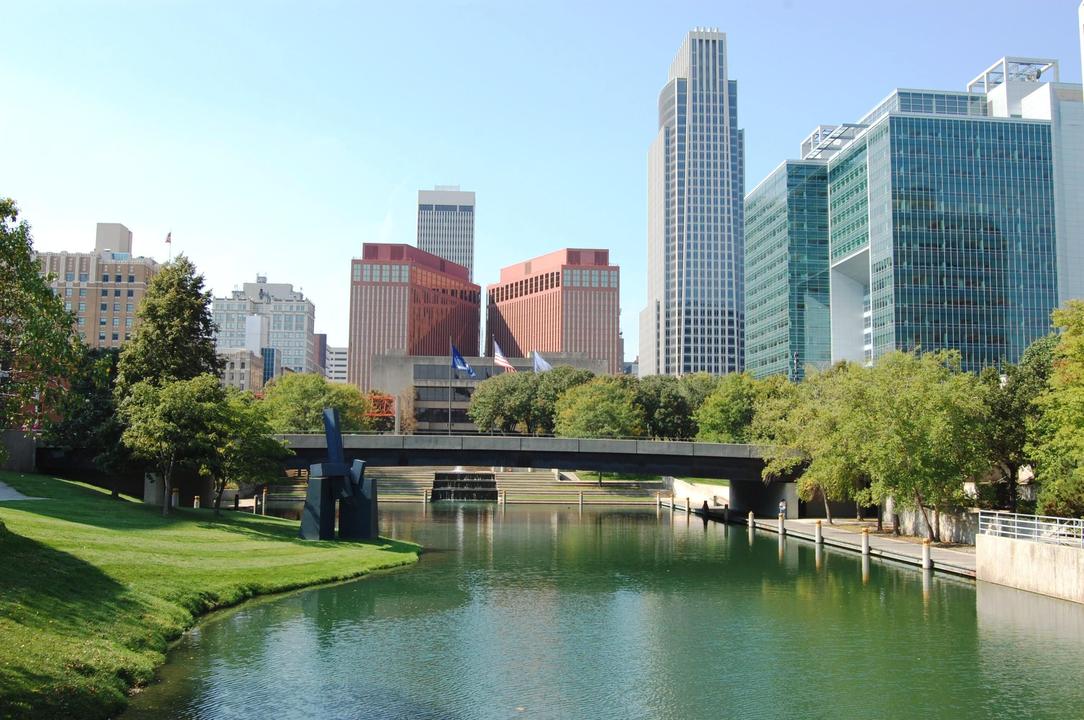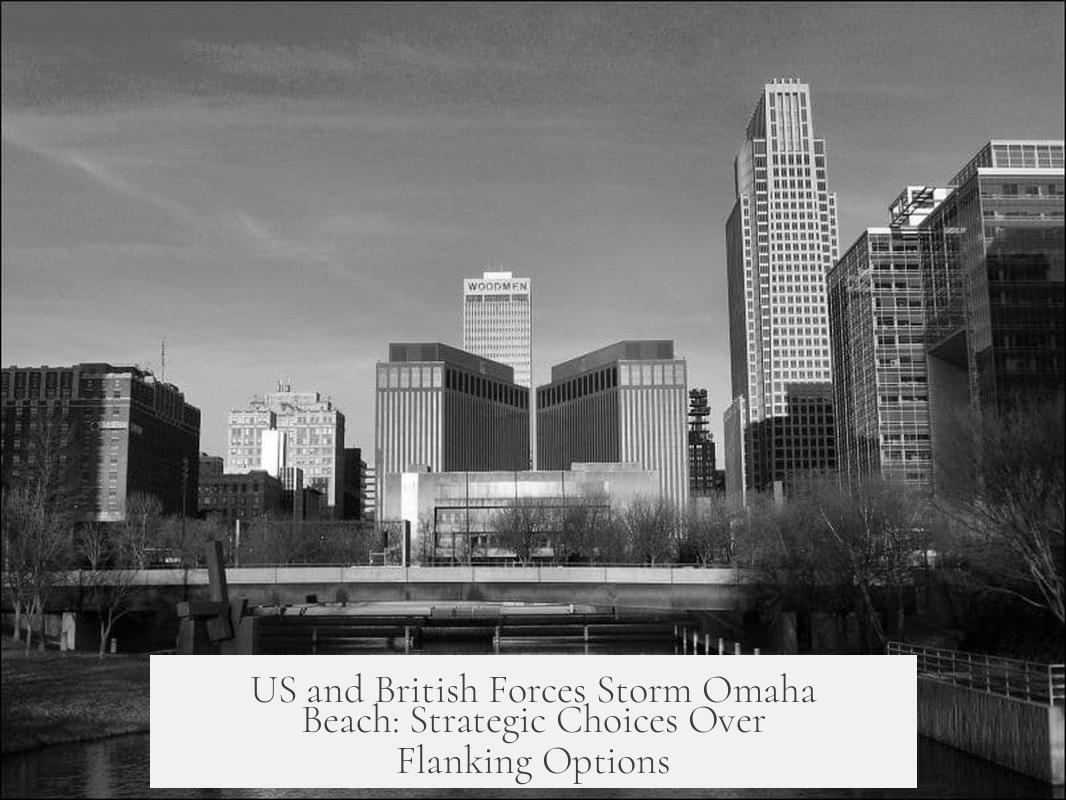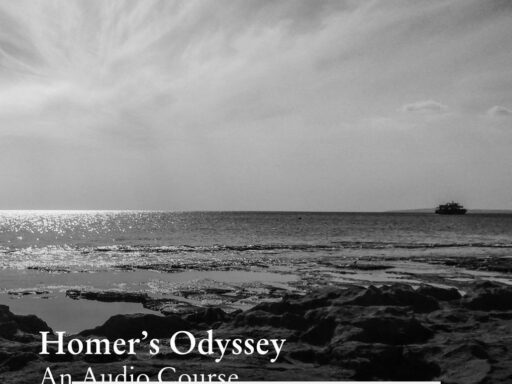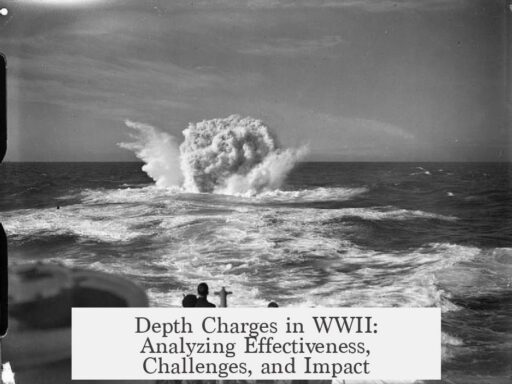The US and British forces stormed Omaha Beach directly despite its heavy German defenses due to its strategic importance, limited suitable landing beaches, and logistical constraints that made flanking difficult. Omaha was the only beach in the sector that met specific amphibious assault requirements, and securing it was essential to link Allied forces and establish a continuous front. Attempts to land a few kilometers to the sides were not feasible due to geography, tides, enemy terrain, and planning limitations.
The key goal at Omaha was not merely capturing the beach but establishing a secure beachhead. This was necessary to connect the US forces landing at Utah Beach and the Anglo-Canadian troops landing further east on Gold, Juno, and Sword Beaches. Without this link, German counterattacks could isolate Allied forces, disrupting the invasion’s success.
The physical characteristics of beaches suitable for a large-scale amphibious assault are strict. Landing craft need gently sloping beaches without shoals, allowing them to approach close to shore. The terrain behind must permit troops and vehicles to move inland freely, excluding cliffs or flooded marshes. The soil must support tanks and trucks; otherwise, mobility would be compromised. Omaha satisfied these conditions better than surrounding beaches, which were blocked by cliffs or unsuitable terrain on the west and east.
The coastal geography around Omaha included multiple draws—natural paths through the bluffs—which, while still difficult, allowed some access inland. This made Omaha relatively accessible for landing troops and mechanized units. Beaches close to Omaha did not commonly offer such advantages, blocking alternative landing sites for flank attacks.
Intelligence failures contributed to the heavy losses at Omaha. Allied reconnaissance had not detected that the German 352nd Infantry Division, an experienced and well-motivated force, had reinforced this sector. Allied aerial bombardment before the landings failed to neutralize defenses effectively because most bombs missed or fell inland. Additionally, many of the amphibious “DD” (Duplex Drive) tanks sank in rough seas and did not provide much-needed armored support.
Strategically, Normandy was a compromise choice offering a route with minimal natural obstacles toward Germany. The Allies deliberately avoided Calais, where German defenses were strongest. Omaha’s selection was part of a larger plan to capture five beaches simultaneously, securing a broad front to facilitate a breakout into France.
Trying to flank Omaha by landing several kilometers on either side was infeasible. The beaches designated for landing were carefully chosen based on detailed hydrographic surveys. The terrain off these beaches allowed landing craft to approach close to shore, a vital requirement the nearby coastlines lacked. Attempts to land in areas where the geographical conditions did not support amphibious vehicles risked stranded troops, exposure to German counterfire, and logistical breakdown.
The invasion plan also demanded strict adherence to designated landing lanes. Deviating from these lanes increased the risk of disorganization, friendly fire, and loss of naval gunfire support coordination. On D-Day, timing was critical; the Allies anticipated the German armored counterattack within 24 hours. Concentrating forces on pre-determined beaches allowed rapid build-up of combat power to defend the new front.
Finally, Omaha was already flanked by other beach landings. Utah Beach to the west was secured by US forces with fewer casualties. Gold, Juno, and Sword Beaches to the east were assigned to British and Canadian units. Together, this multi-beach assault prevented German forces from concentrating on any single sector and contributed to the overall success of the Normandy invasion.
| Factor | Explanation |
|---|---|
| Strategic Importance | Securing a beachhead between Allied landing sites to link forces and prevent German counterattacks |
| Beach Suitability | Omaha was one of the few beaches with appropriate terrain and offshore conditions for large-scale amphibious landings |
| Flanking Impossibility | Nearby coastline was blocked by cliffs or unsuitable terrain for landing craft and mechanized forces |
| Planning Constraints | Strict landing lanes and timing to ensure coordination of naval gunfire and troop waves |
| Intelligence Failures | Underestimated German troop strength and ineffective pre-landing bombardments |
| Multi-Beach Assault | Simultaneous landings at Utah, Gold, Juno, and Sword flanked Omaha and pressured German defenders |
- Omaha Beach was uniquely suitable for amphibious assault in that sector due to terrain and tidal conditions.
- Securing Omaha was critical to connect US and Allied beachheads and prevent German counterattacks.
- Flanking by landing several kilometers to the sides was impossible due to cliffs, rough terrain, and unsuitable beaches.
- Strict planning and timing dictated assault on specific beaches with assigned landing lanes.
- Allied intelligence underestimated German strength at Omaha, increasing casualties.
- Omaha was part of a broader, coordinated multi-beach assault flanking the German defenses.
Why Did US and British Forces Storm Omaha Beach Directly Despite Knowing It Was Heavily Guarded? Why Not Flank It From Sides?

US and British forces stormed Omaha Beach head-on even though they knew it was heavily defended because Omaha was one of the few beaches suitable for a large amphibious invasion, critical to linking Allied troops, and flanking options were limited by geography and logistics. Let’s unpack why this direct assault was the chosen—and indeed the only practical—option.
The question is totally valid: Why would brave troops charge a fortified beach when they could simply land a few kilometers on each side and sneak in? It sounds straightforward, but wartime realities are messy. So, buckle up!
Strategic Stakes of Omaha Beach
First, Omaha Beach wasn’t just another patch of sand on June 6, 1944. Securing it was about more than capturing territory—it was vital to securing the beachhead that connected Utah Beach to the west and the Anglo-Canadian beaches to the east. This link-up was critical.
If the Allies failed to capture Omaha, a dangerous gap would have remained. German forces could exploit it, attacking from behind or splitting the Allied forces. So, the goal was to secure that middle part to prevent fracturing the invasion line.
Think of it as trying to hold a zipper together: Omaha was right in the center. If the zipper breaks, it all falls apart.
The Geography and Beach Conditions Limited Options

The beaches along Normandy’s coast don’t look identical—or even friendly—to landing craft from ships. You need very specific conditions to successfully land thousands of troops along with tanks and vehicles. Not every spot is fit.
- The beach has to be wide enough to accommodate waves of troops and vehicles.
- The offshore water can’t be too shallow with sandbanks or shoals that would ground landing crafts miles out, leaving troops to swim under fire.
- The beach must have exits inland—not cliffs or swamps that trap soldiers after landing.
- And the soil has to be firm enough to support tanks and trucks moving inland.
Omaha checks these boxes better than most surrounding areas. Both to the east and west, cliffs prevent vehicles moving off any landing. So the beaches to flank Omaha would have been no better and likely worse for launching the assault.
Why Not Flank Omaha Instead of Attacking It Directly?
Landing a few kilometers to the east or west of Omaha and then flanking sounds like a military tactical dream, but amphibious assaults do not work like that—especially in 1944.
- The invasion craft were meant to stick to pre-planned delivery lanes to avoid collisions and confusion. Deviating from those lanes risked chaos and friendly fire from naval artillery.
- The geography and hydrography severely limited where these landing crafts could approach.
- Aside from Omaha, the cliffs and tough terrain made landing troops elsewhere near impossible to support sustained and mechanized advances.
- The planners had only about 24 hours to consolidate force buildup before German armored counterattacks, so delays or dispersing troops too thin could doom the beachhead entirely.
A Bit of Bad Luck: Intelligence Failures and Rough Seas

Here’s where the story gets rough—literally and figuratively. The Allies underestimated the strength and morale of the German 352nd Infantry Division at Omaha. These troops were veterans, well dug in, tougher than expected.
On top of that, poor weather and cautious bombing meant Allied bombardment failed to hit key German bunkers before the landings. And then, the famous “DD” amphibious tanks meant to support the infantry sank in the choppy seas. Hello, rough waves!
Without these armored supports, the first waves suffered severely, turning Omaha into the bloodiest beach of D-Day. But giving up or circumventing the beach was not an option because of all the restrictive factors above.
The Big Picture: Omaha Was Flanked by Other Beaches
Here’s a twist that often gets overlooked. Omaha was itself part of a wider, five-beach invasion: Utah, Omaha, Gold, Juno, and Sword. These didn’t just land troops; they essentially flanked each other at a larger operational level.
Omaha faced fierce German defenses, but assaulting only it alone wouldn’t have sufficed. The other beaches also landed forces and stretched German resources. So in a broader sense, flanking was happening—just not by individual units skipping Omaha’s defenses piecewise.
Geography, Logistics, and Strategic Urgency Decide the Assault

The choice to launch a direct assault on Omaha was less about “let’s march right at the biggest guns,” and more about
- Where were the forces most needed?
- Where could an assault actually land successfully and push inland?
- How fast could the beachhead be secured to fend off counterattacks?
Flanking the beach by landing kilometers away simply wasn’t feasible due to physical geography and landing craft constraints. And the timetable? Too tight to risk dispersing forces.
Lessons and Legacy
The Omaha landing shows that sometimes military strategy is about hard choices with imperfect options. The legacy? Despite massive casualties, the beach was secured, allowing Allied troops to pour inland.
Today, Omaha Beach remains a solemn reminder of sacrifice but also a battlefield where careful planning, geographic realities, and bold courage overcame seemingly insurmountable odds.
To Sum It Up

The direct assault on Omaha Beach was a calculated decision shaped by geography, logistical constraints, strategic necessity, and timing. Flanking options simply weren’t available in the amphibious invasion context, making the head-on landing the only practical way to secure a vital link in the Allied invasion plan.
Could the Allies have stormed the sides and flanked German defenses instead? Nope, not unless amphibious landing tech and intelligence had been vastly different. Instead, they faced the guns straight, proving sometimes the hard way is the only way.




